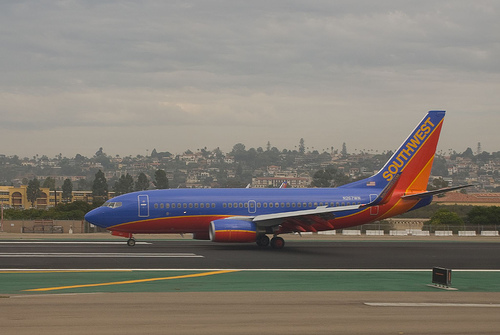I recent flew between Denver to Philadelphia. We were about 30 minutes early. My return flight was 35 minutes early. Too good to be true, right? Right.
How dare Southwest be early!
How is it possible that an airline can achieve that kind of efficiency? They certainly didn’t fly faster. That would cost too much money. A glimpse at the math is illuminating.
My return flight left at 8:40 am (EST) and was due to arrive in Denver at 11:15 am (MST). From gate to gate that is an allotted 4 hours and 35 minutes (note two hour time change). Flying time was announced to be 3 hours and 20 minutes. Basically, by scheduling the flight within a large window of time, the airline creates a 1 hour and 15 minute buffer for time spent on the ground between the two gates. The 11:15 am reference point makes it a lot easier to be substantially early, even though the same flight would have been on time just a few years ago.
How do I know that this is true? Well, I did a little research and found a Wall Street Journal article which outlines this practice:
Across the airline industry, carriers have been adding minutes to “block times”—the scheduled durations—baking delays into trips so that late flights officially arrive “on-time” and operations run better because flights pull into gates more often on schedule. Even though the recession has led airlines to cut flights and reduce congestion at many airports and in the skies, the move to pump up schedules has continued: Last year, most airlines added padding to scores of flights.
For some airlines, longer scheduled times for flights reflects the reality of inefficiency in the nation’s air travel system, which often can’t handle the volume of planes without delay, especially when bad weather hits. For others, lengthening scheduled arrival times boosts on-time rankings charted by the Department of Transportation: Those numbers can have a real effect on public perception.
Indeed.
